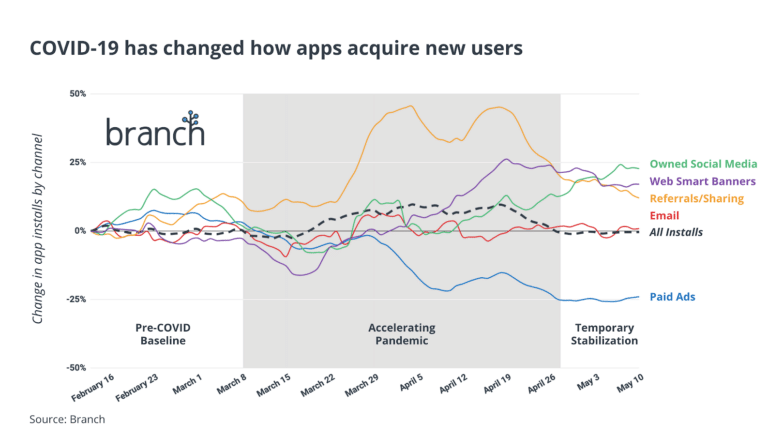After a few months of social distancing, the world is no longer the same. The adoption of everything virtual, from food delivery, shopping, work, dating, birthdays, workouts, and in my case, even physical therapy, has accelerated to a place where it would have taken years and decades to get to otherwise. As a business owner — a good digital presence is becoming crucial to surviving, and a mobile app is key to that presence. In fact, our data shows significant app usage in many verticals, including some that are surprising like dating and eCommerce, and notable shifts in how apps are acquiring new users.
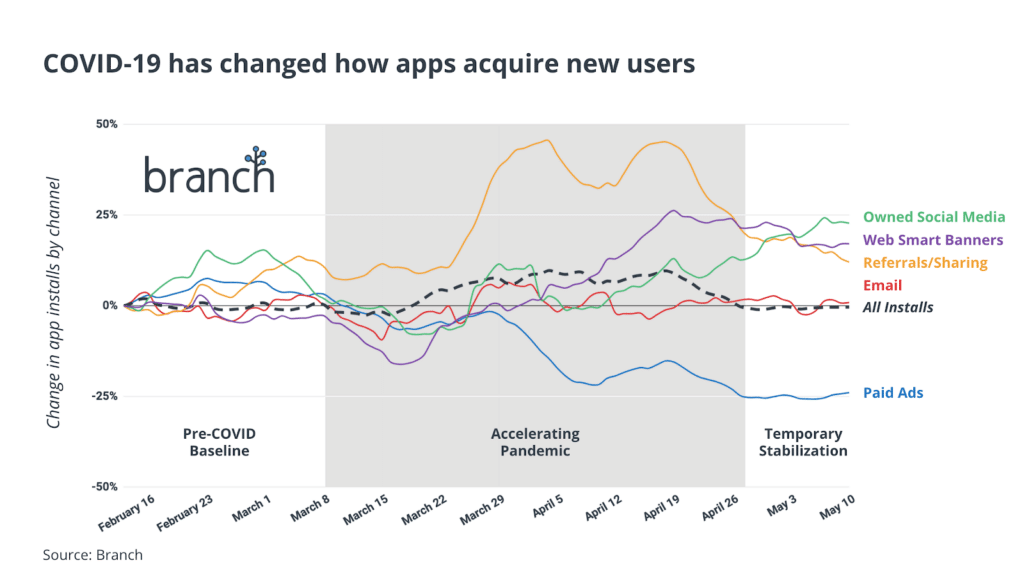
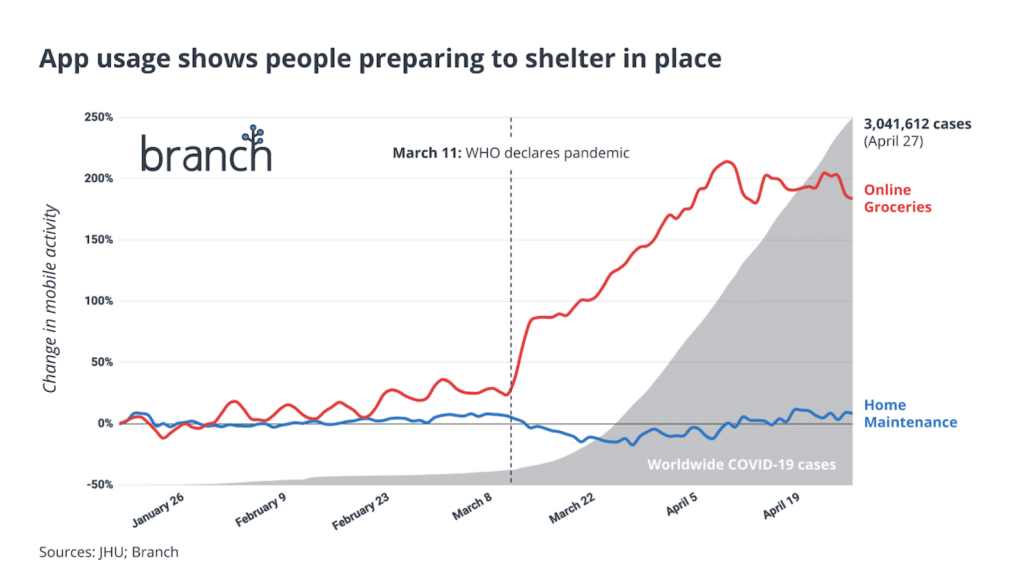
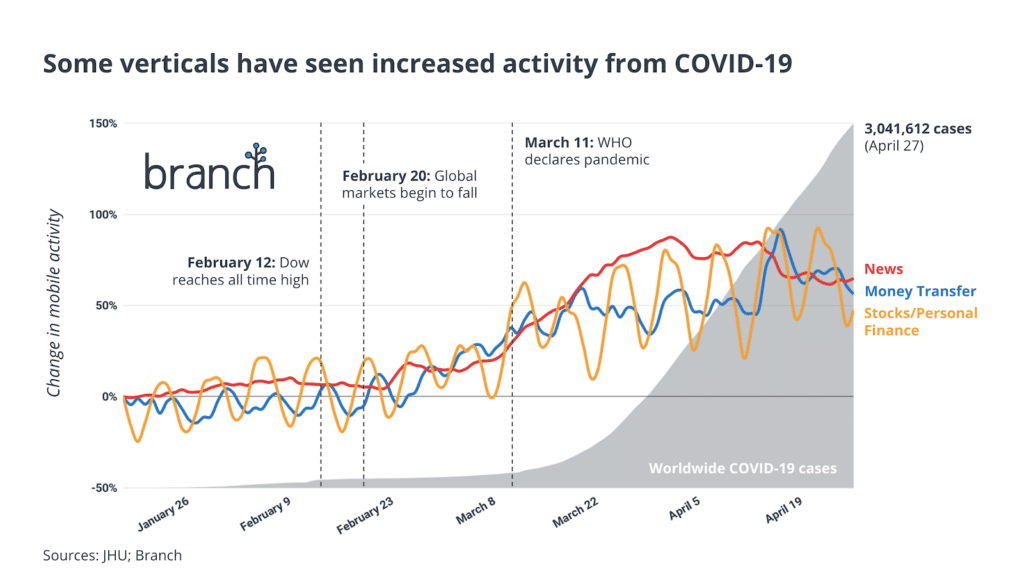
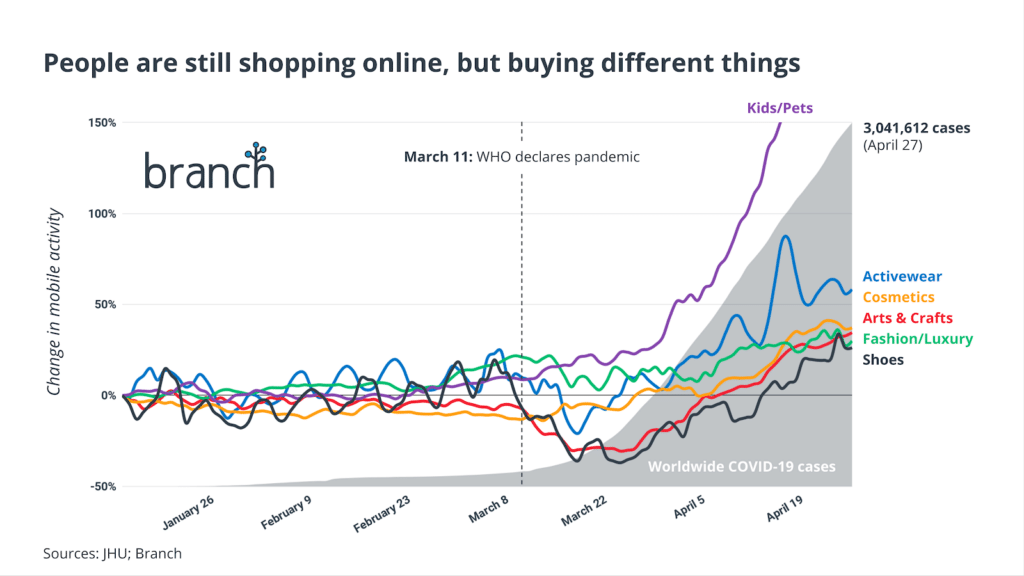
Why start with the app
As I write this article, most of the strategies are really about how you can take users you acquire in different channels and convert them into the app. If you have a ton of web and app users, I don’t need to convince you that apps retain users better and convert better overall. Getting a user to download your app is like going steady with them — by giving you a dedicated space on their home screen, they are entering a committed relationship — and on average, app users convert at a double rate and are twice more likely to return to your brand than a web user.
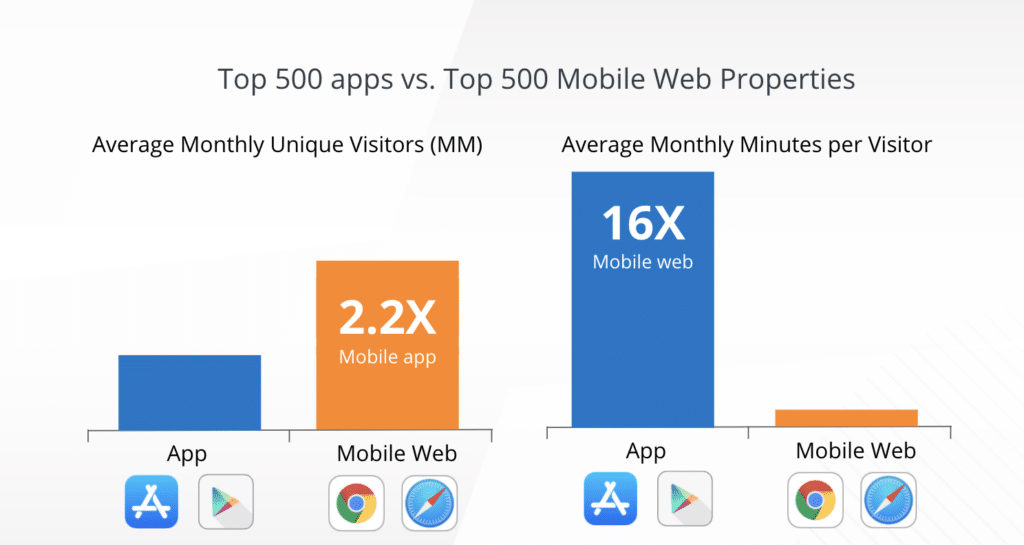
Strategies for getting more app users
So now that I’ve convinced you that the app is better (which most of you already knew), let’s go over three simple strategies for getting more users into the app. This article will cover some of the basic concepts while next week I will cover more advanced strategies for mobile growth.
1. User to user sharing
In our new normal we look for ways to connect — sometimes it’s Zoom calls or Houseparty rooms, other times it’s sending someone a virtual gift card, or a link to a news article, or a pair of shoes that reminds me of them. In this physically disconnected world, we look for virtual connections, and if you haven’t invested in a good sharing or referral program, now is the time to do it. When we looked at referral data in the past, we found that a majority of apps who have sharing or referrals through Branch were seeing a big portion of their traffic come from these user to user referrals. Those percentages have increased over the past few months as people share more and marketers have cut paid budgets to conserve cash in case of an economic downturn.
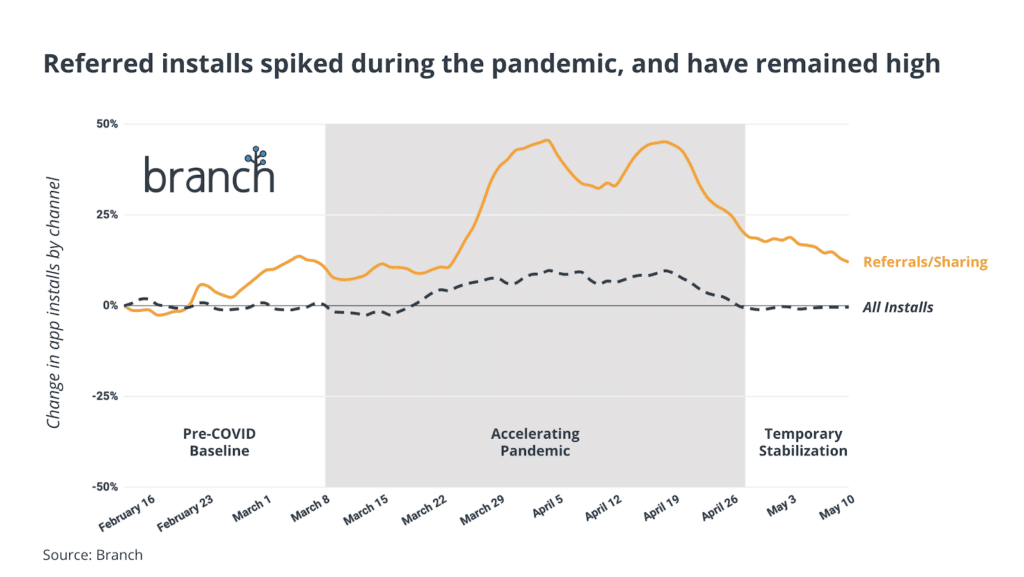
What are some good practices for building your own sharing and referral program? Here’s what I’ve learned from analyzing hundreds of these over the years:
- Make sure your links can share the app but also the content inside your app — content is usually what turns viral and is what users share.
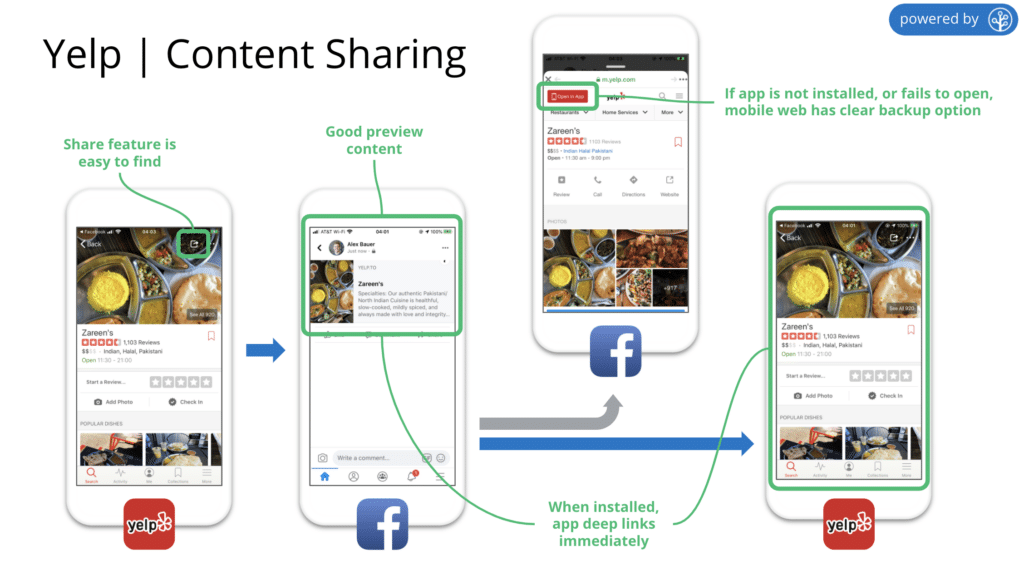
- If you can, incentivize your users to share, and if you give an incentive, two-sided incentives work best. In these times, people are more conscious than ever — giving a friend a discount to something cool and getting a discount or promo themselves can work wonders. Branch links can have a referral code and user ID embedded securely to make this easy.
- Make sure your links work and that they deep link through install — if a user gets a link to something but can’t find that item after downloading the app, they tend to drop off and not come back. Deep linking delights users and Branch links ensure that your new users get the best possible experience when they click on a link shared from a friend.
- Make sure you make it easy to share on the most used platforms — we recommend using native share sheets, or if you build it yourself, making it dead easy to use.
- Sharing a screenshot of the content in addition to a link helps the new user be more likely to click on the link and download your app.
- Advanced: Some apps enable sharing when a user takes a screenshot in their app — showing a pop-up asking if the user wants to share — that enables them to add a link in addition to the image for better tracking and better UX for the user getting the link, who otherwise might not consider uploading the app.
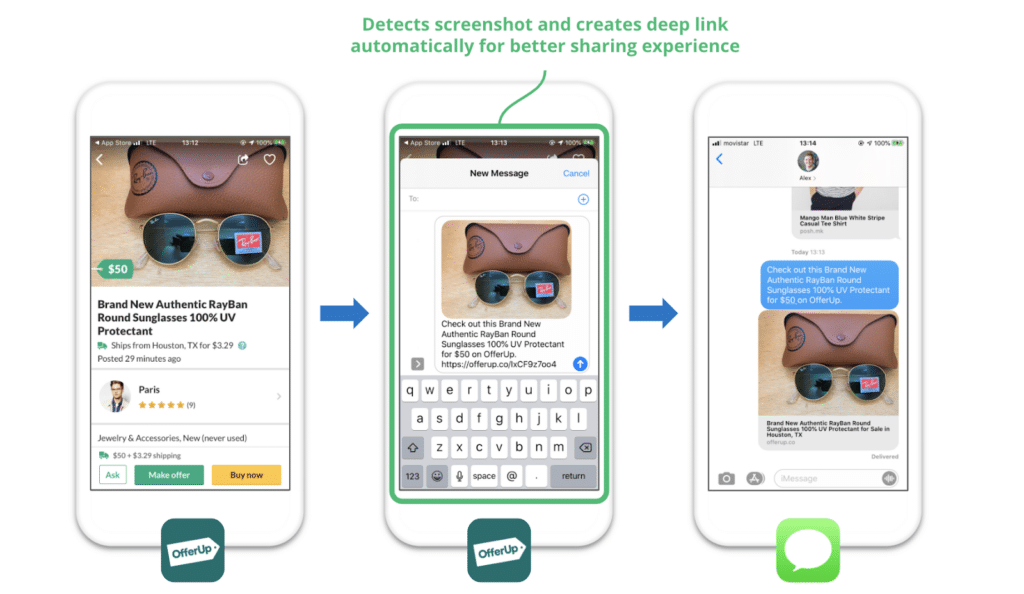
2. Social Posts
As we looked at all the different verticals and how they changed as social distancing became more prevalent, one thing stood out: Everything to do with social blew up, from video to games.
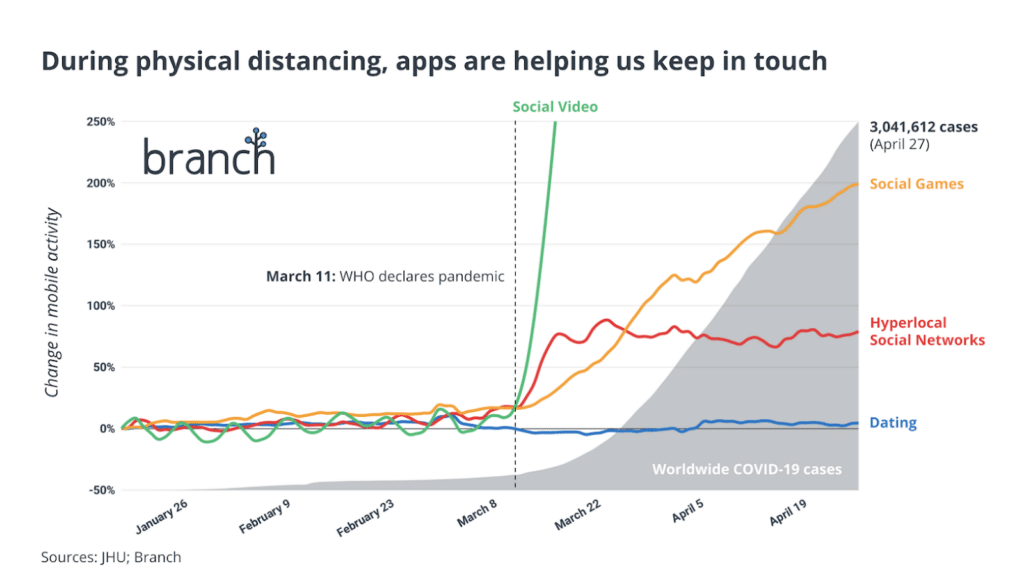
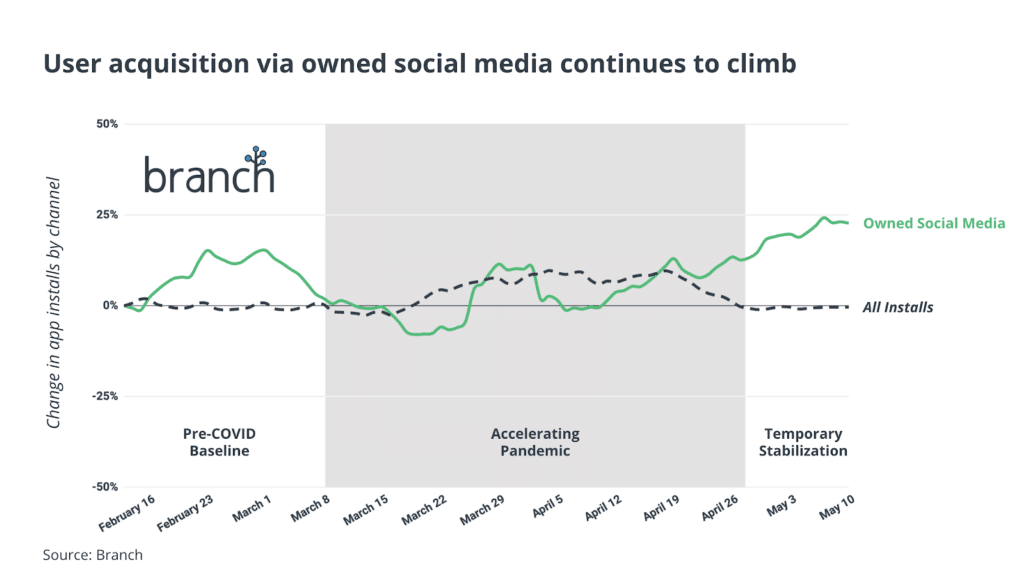
We are spending time at home and we are bored, so time spent on social networks has skyrocketed. What does that mean for your brand? This is the time to spend time and effort on your social media strategy — be interesting, be bold, and post often. Here are some learnings from what I’ve seen around:
- Authenticity works — the great thing about being stuck at home is that the layers peel away and the world sees us for who we are, from SNL over ZOOM, to seeing our co-workers’ homes (unless they are obsessive about Zoom backgrounds).
- Post interesting content — this could be anything from your products, to lists of interesting uses of your products, to news, to video, etc. For example, at Branch we started doing videos of our customers using Branch and calling them #branchinthewild, and we have seen a lot more views and adoption since social distancing began.
- Deep link to your content inside the app — make sure your users get a good experience by actually deep linking the content in the app if they have it, or take them to a web preview of that content with a web to app banner if they don’t.
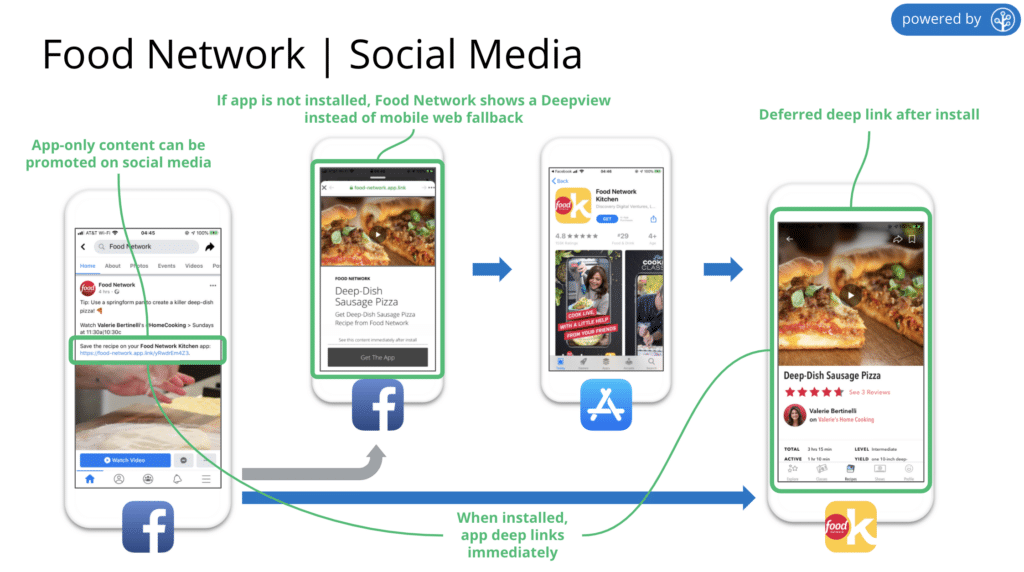
3. Web to app banners
While this is a tool that many of the bigger companies use, I am often surprised by how many brands don’t customize and personalize their banners. When we looked at our data, we saw that by personalizing and targeting your banner, you can increase the view-to-install ratio by 5X. That’s right: you can get on average 5X more click-to-installs from your web visitors.
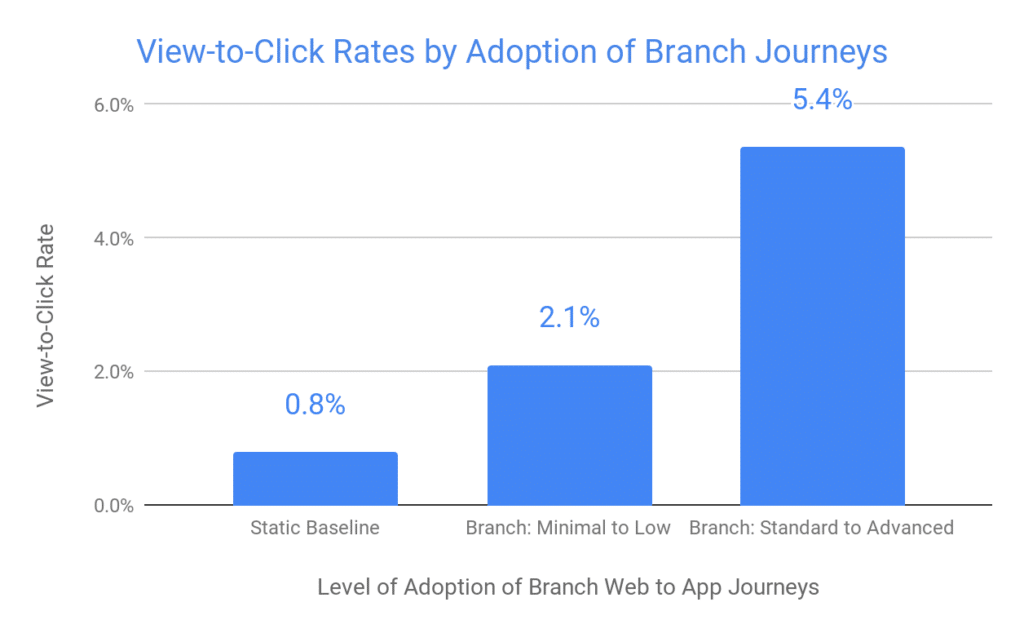
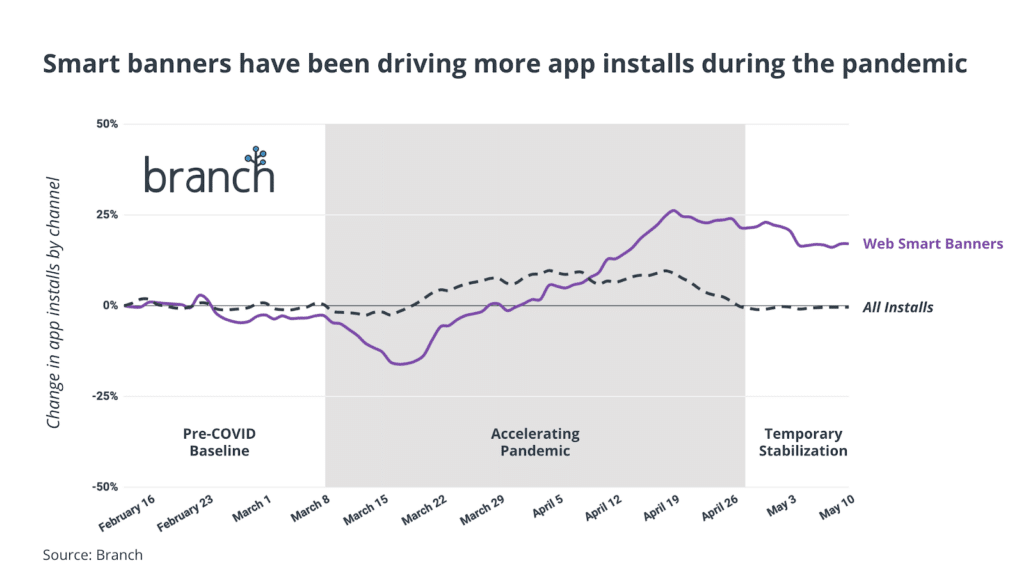
While there are some advanced techniques here like optimizing your SEO and using banners to drive that traffic into the app, here are some basics for your banners:
- Use them often and deep link to the content in the app. On pages where you don’t want to distract the user or on pages where users come from searches, you can choose the top banner or float button (Google can penalize you for interstitials, but is fine with small banners)
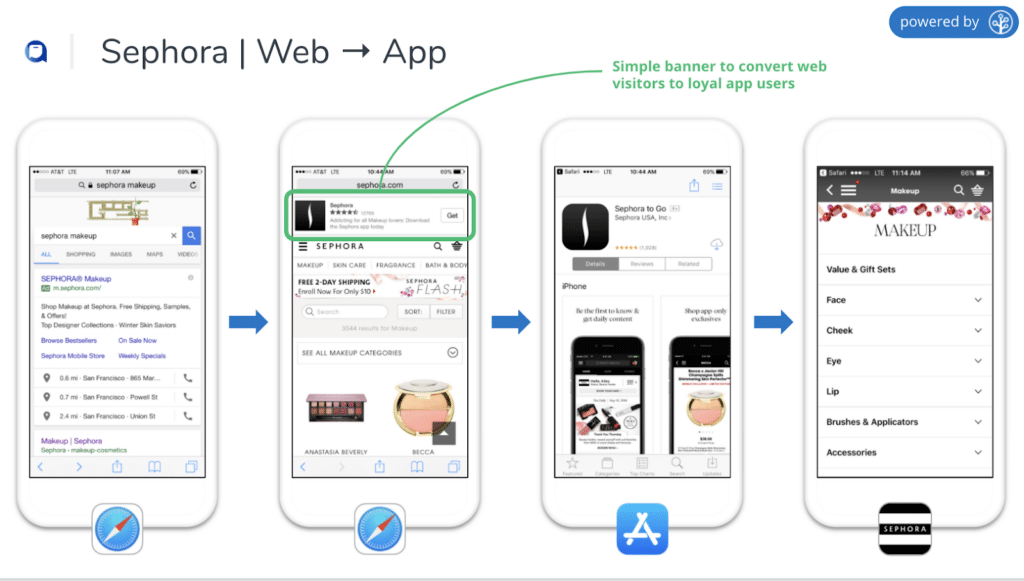
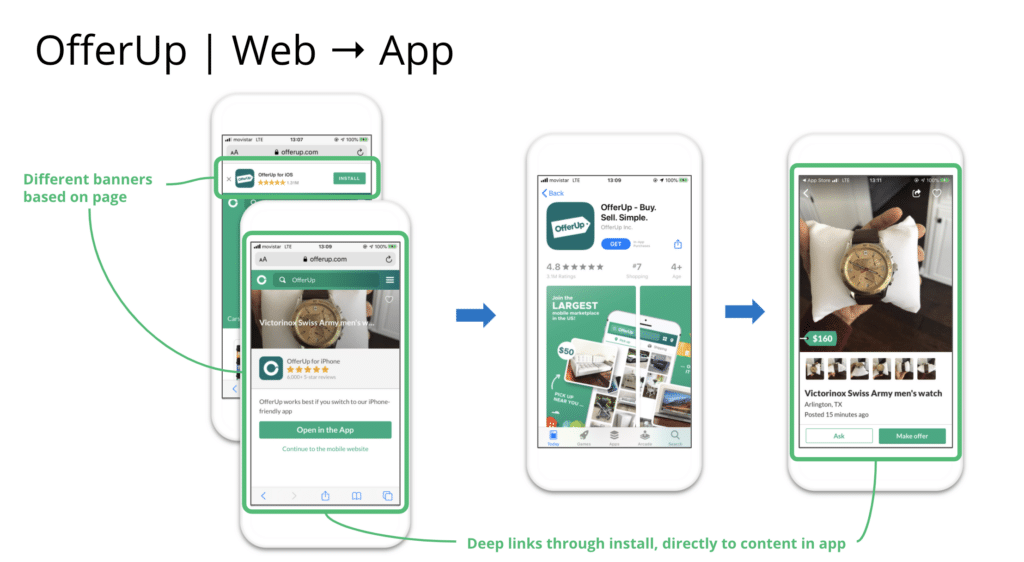
- Personalize depending on the user. Users should get a different experience if they have the app installed (you can be pushier). If they don’t, you should ease them in. You can also personalize by language, type of page they are on, and how active they are — the more sessions they have, the more aggressive you can get.
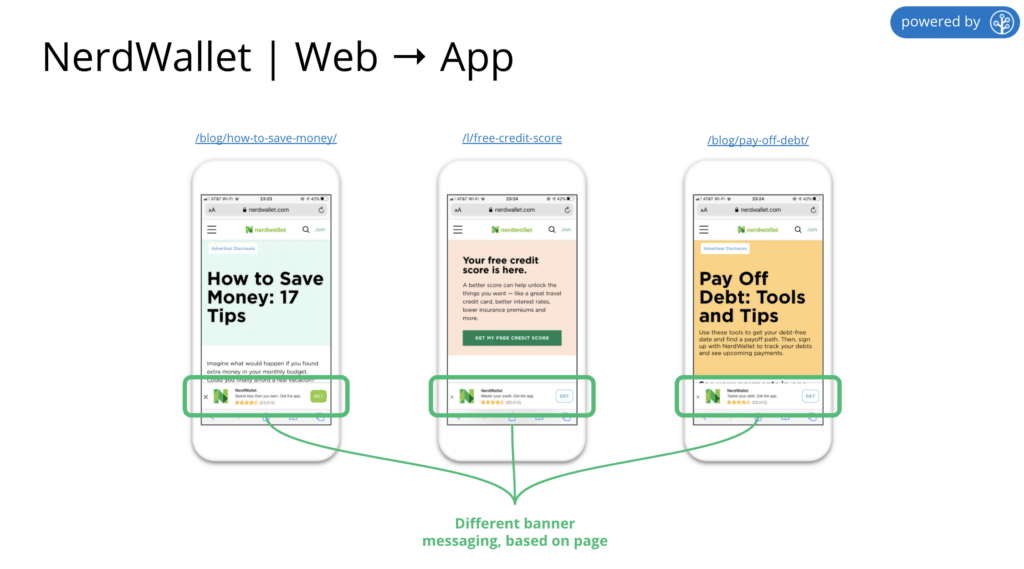

How to personalize web-to-app banners in the Branch dashboard.
- Personalize dismiss settings — in some cases (such as lower engagement, no app installed), you might wait a long time once a banner was dismissed to show something again, while in other cases (highly engaged user, has the app, just purchased) you might want to make that window smaller.
- Try an incentive — since app users are twice as likely to buy and return, converting a web user into an app user is valuable. What we have seen work well is offering organic web visitors a discount or special price if they download the app and passing that as a parameter in your banner link — Branch makes this super simple. What if some of your products are low margin or some users have a high acquisition cost? You can target the promotion depending on which pages the user is on or where they came from!
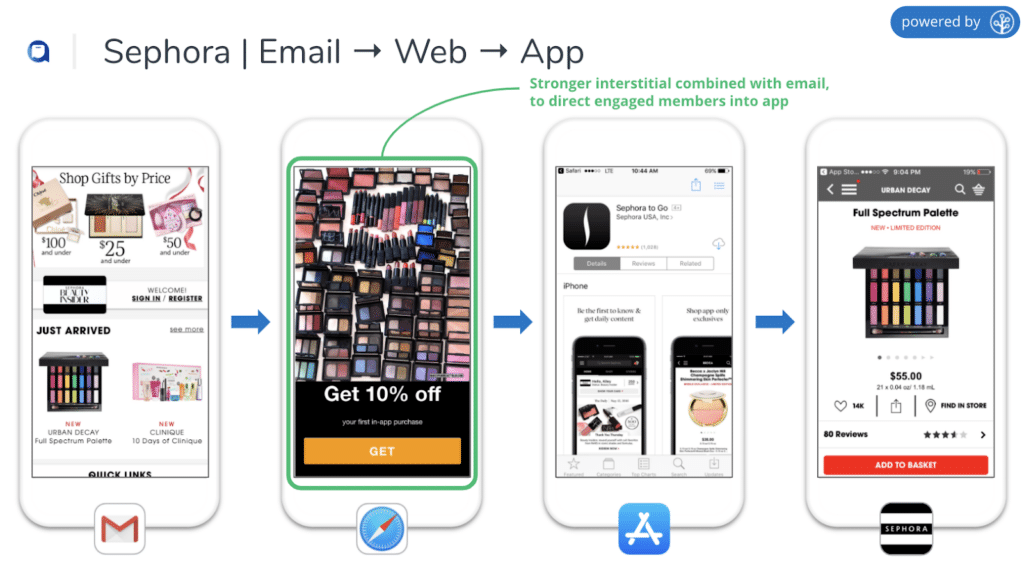
4. Email to app
Last but not least, email is a great way to get more users into your app. Unfortunately, even though the data is clear, many brands still send their users from email to their website, even though those emails are read on mobile. The reason? Detecting the platform and whether a user has the app is not always easy, and furthermore, most email solution providers break universal links on iOS when they wrap email links in a redirect in order to track links. Our deep linked email solution fixes this — it opens the app if users have it, and falls back on a website only if they don’t. This makes sure the user always gets to the right content and increases engagement. Better yet, we help you track conversions from email regardless if they happen on the web or in-app! In fact, our latest case study showed that just by implementing this practice, our customers boosted the overall engagement of their user by 11%. Some best practices when it comes to email:
- Deep link content promotions — open the app if the user has it, fall back to your website otherwise.
- Track conversions across web and app.
- Set up app download promotions differently than content promotion email links — make sure the link fallback is the app store, provide an incentive, and pass that incentive through the install.
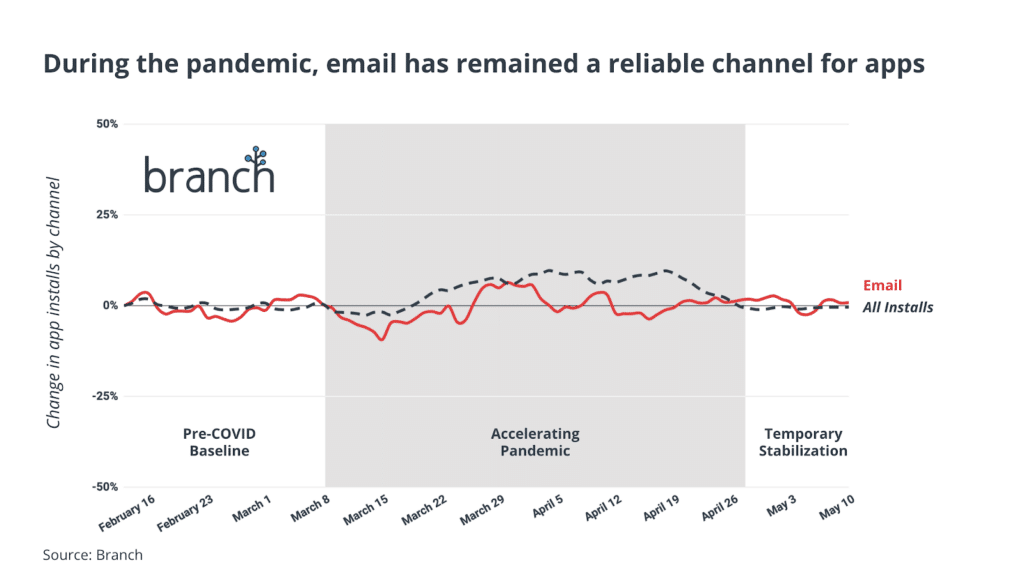
While budgets are short during these times, these tactics can help you grow and build retention and engagement with your users even with a small marketing budget. And the best part about it? App users are more likely to stay with you through this period and beyond, and will help you continue to expand as businesses and social interactions start returning to normal.






















